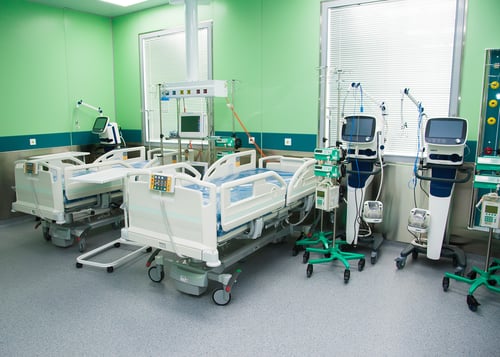We would like to hear from you
Contact Us!
Our sales and technical support staff are available 8-5 EST, Mon-Fri
The go-to accreditation body for hospitals and nursing homes, The Joint Commission on Accreditation of Healthcare Organizations—commonly referred to as just The Joint Commission—grant accreditation only to facilities who meet the standards set by Medicare.

The go-to accreditation As Stated by JCAHO on their website, the standards set forth in regards to emergency backup power solutions on-site are as follows:
“If the generator serves as a component of an Essential Electrical System (EES) as required for critical care rooms and general care rooms by NFPA 99 (2012 edition) Health Care Facilities Code, Chapter 6, then the licensing authority (typically the state health department) should be consulted for applicable requirements".
"Basic Care" patient rooms in facilities, such as those used for inpatient behavioral health, do not require an EES. However, in many of these facilities, the generator is the alternate source of power for the illumination of the means of egress, emergency (task) lighting, exit lights, and/or the fire alarm system. NFPA 101 Life Safety Code requires these all to have a minimum duration of 1-1/2 hours (Class 1.5) (which may also be from a battery source).
The Joint Commission Emergency Management Standard EM.02.02.09 EP 5 requires that hospitals identify an alternative means for providing "fuel required for building operations, generators, and essential transport services that the hospital would typically provide." The facility should assess how it would be affected if outside emergency support could not be obtained for 96 hours.
This does not mean that they need to have 96 hours worth of fuel on site. The plan could include memoranda of understanding (MOUs) with suppliers to replenish fuel as needed during the emergency period. Additionally, the plan could be to operate without normal branch of power to reduce fuel consumption, to extend run-time of the available fuel.
If the generator is used as the backup power source for the life safety branch of the electrical” system, the facility should have enough fuel to run the generator for a least 1-1/2 hours for as long as the building is occupied.
What this means for a battery back system is that they can become an essential part of your backup power plan, without needing to be the sole provider of power. In a large hospital setting, battery power—referred to as SEPSS or stored energy emergency power supply systems—can be used to provide enough power for patients and staff to exit the facility and for any in-progress treatments or procedures to be brought to a safe place and have those patients evacuated.
Additionally, battery backup power serves as an excellent “bridge” option providing instant, reliable power for the duration of time between when an outage occurs and when a fuel-powered generator can begin to provide power—which can often be upwards of 10-15 minutes.
Our sales and technical support staff are available 8-5 EST, Mon-Fri